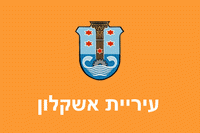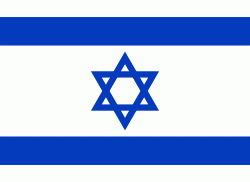Ashkelon
 |
The ancient seaport of Ashkelon, on the southeastern edge of the modern city, dates back to the Neolithic Age. In the course of its history, it has been ruled by the Ancient Egyptians, the Canaanites, the Philistines, the Assyrians, the Babylonians, the Greeks, the Phoenicians, the Hasmoneans, the Romans, the Persians, the Arabs and the Crusaders, until it was destroyed by the Mamluks in 1270. The Palestinian village of Al-Jura developed immediately adjacent to the ruins.
The modern city was originally located approximately 4 km inland from the ancient site, and was known as al-Majdal or al-Majdal Asqalan (Arabic: al-Mijdal; Hebrew: ʾĒl-Mīǧdal). Its inhabitants were exclusively Muslims and Christians; on the eve of the 1948 Arab–Israeli War the inhabitants numbered 10,000 and in October 1948, the city accommodated thousands more Palestinian refugees from nearby villages. The town was conquered by Israeli forces on 5 November 1948, by which time much of the Arab population had fled, leaving some 2,700 inhabitants, of which 500 were deported by Israeli soldiers in December 1948 and most of the rest were deported by 1950. Today, the city's population is almost entirely Jewish.
Migdal was initially repopulated by Jewish immigrants and demobilized soldiers. It was subsequently renamed multiple times, first as Migdal Gaza, Migdal Gad and Migdal Ashkelon, until in 1953 the coastal neighborhood of Afridar was incorporated and the name "Ashkelon" was adopted for the combined town. By 1961, Ashkelon was ranked 18th among Israeli urban centers with a population of 24,000. In the population of Ashkelon was, making it the third-largest city in Israel's Southern District.
The name Ashkelon is probably western Semitic, and might be connected to the triliteral root š-q-l ("to weigh" from a Semitic root ṯql, akin to Hebrew šāqal or Arabic θiql "weight") perhaps attesting to its importance as a center for mercantile activities. Its name appeared in Phoenician and Punic as (????) and (?????). Scallion and shallot are derived from Ascalonia, the Latin name for Ashkelon.
Map - Ashkelon
Map
Country - Israel
 |
 |
| Flag of Israel | |
The Southern Levant, of which modern Israel forms a part, is on the land corridor used by hominins to emerge from Africa and has some of the first signs of human habitation. In ancient history, it was where Canaanite and later Israelite civilizations developed, and where the kingdoms of Israel and Judah emerged, before falling, respectively, to the Neo-Assyrian Empire and Neo-Babylonian Empire. During the classical era, the region was ruled by the Achaemenid, Macedonian, Ptolemaic and Seleucid empires. The Maccabean Revolt gave rise to the Hasmonean kingdom, before the Roman Republic took control a century later. The subsequent Jewish–Roman wars resulted in widespread destruction and displacement across Judea. Under Byzantine rule, Christians replaced Jews as the majority. From the 7th century, Muslim rule was established under the Rashidun, Umayyad, Abbasid and Fatimid caliphates. In the 11th century, the First Crusade asserted European Christian rule under the Crusader states. For the next two centuries, the region saw continuous wars between the Crusaders and the Ayyubids, ending when the Crusaders lost their last territorial possessions to the Mamluk Sultanate, which ceded the territory to the Ottoman Empire at the onset of the 16th century.
Currency / Language
| ISO | Currency | Symbol | Significant figures |
|---|---|---|---|
| ILS | Israeli new shekel | ₪ | 2 |
| ISO | Language |
|---|---|
| AR | Arabic language |
| EN | English language |
| HE | Hebrew language |















